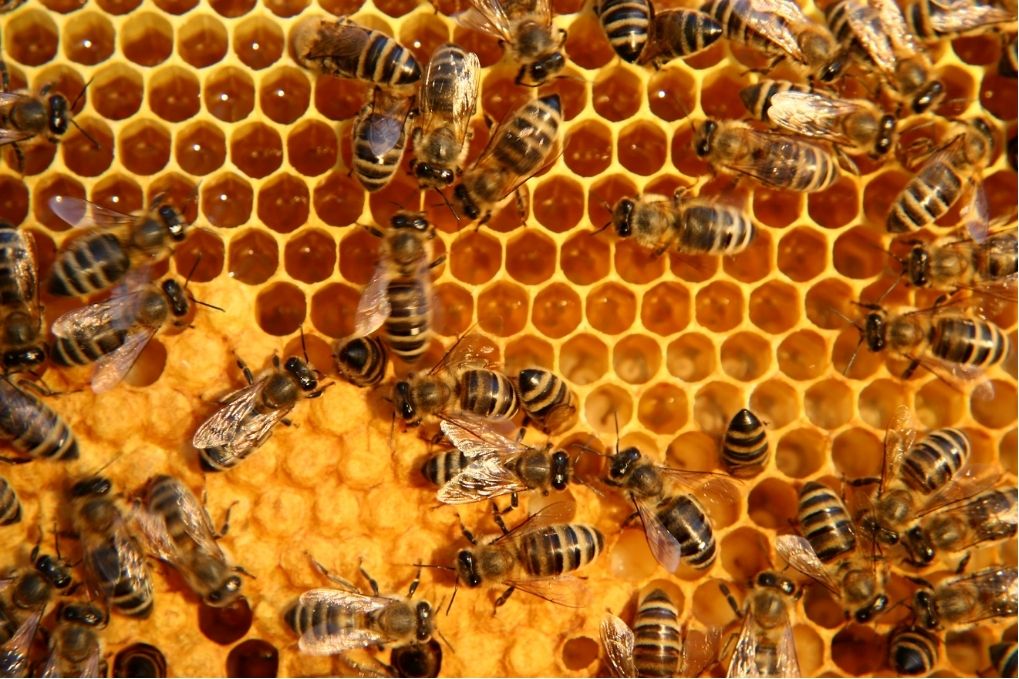Most of our supply in Honey Bees comes from Brazil. There is an explanation and preference for it:
The export of natural honey from Brazil has grown significantly over the past five years. This growth is largely due to the country’s diverse climates and flora, which favor honey production in various regions. Brazil ranks as the ninth-largest honey producer globally, contributing around 4% of the world’s honey accounting for nearly 90% of global organic honey production. The country’s biodiversity, which includes 250 species of stingless bees, contributes to the unique flavors and medicinal qualities of its honey. Many Brazilian beekeepers use sustainable methods, integrating beekeeping with other agricultural activities, such as orange and wild honey from Caatinga biome.
For instance in the Northeast of Brazil, there is a rich diversity of honeys, with emphasis on honeys from native bees such as Uruçu, Jandaíra, and Tiúba, which are produced by stingless bees. In addition to these, there is orange blossom honey, which is appreciated by many and has a lighter color.
Main types of honey from the Northeast:
- Uruçu: Characterized by a light yellowish color and a slightly acidic flavor, it is produced mainly in the Northeast.
- Tiúba: It has a very sweet flavor, an almost transparent color and is produced in Pará and Maranhão mostly.
- Jandaíra: Produced in the semiarid region of Rio Grande do Norte, it has a slightly acidic flavor and is used in local culture as a medicinal product.
- Laranjeira: Produced from the orange blossom, it has a light color and a flavor appreciated by many experts.
- Mandaçaia: A bee native to the caatinga, its honey is light in color, sometimes transparent, and has a liquid texture.
- Jataí: Although produced throughout Brazil, it is appreciated in the Northeast for its medicinal properties and flavor.
- Wild honey: Produced by bees that are not raised in hives, usually in natural locations such as the caatinga.
- Eucalyptus honey: Produced from eucalyptus flowers and with a strong flavor, it is used to relieve respiratory problems.
The diversity of flora in the region, combined with the presence of native bees, contributes to the variety and unique flavor of northeastern honeys.
Brazil also produces multifloral honey, which is commonly labeled as “wild honey” and reflects the variety of plants blooming in different regions.
Honey Formats
Brazilian honey is available in several formats to meet both domestic and international market demands:
- Bulk Honey: The majority of honey is exported in bulk, particularly to the United States, which accounts for 70% of exports.
- Drums : Honey is also packed in iron drums according to customer´s demands.
- Retail Packaging including Private Labels: Honey is also sold in smaller retail-friendly formats such as glass jars and plastic containers, typically for local and international consumers.
Despite preference, Brazilian Apiculture Sector faces some challenges:
- Climate Conditions: Droughts in certain regions, such as the Northeast, have affected honey production in recent years.
- Market Competition: Like many countries, Brazil competes with lower-cost honey producers globally, which can influence pricing on the international market.
Brazil is a major important global player in honey production and export, particularly known for its organic and multifloral honey. The country’s focus on sustainability and high-quality production has allowed it to thrive in the international honey market, despite the challenges posed by climate and global competition. With its diverse ecosystems, Brazil is well-positioned to continue growing its honey industry.

